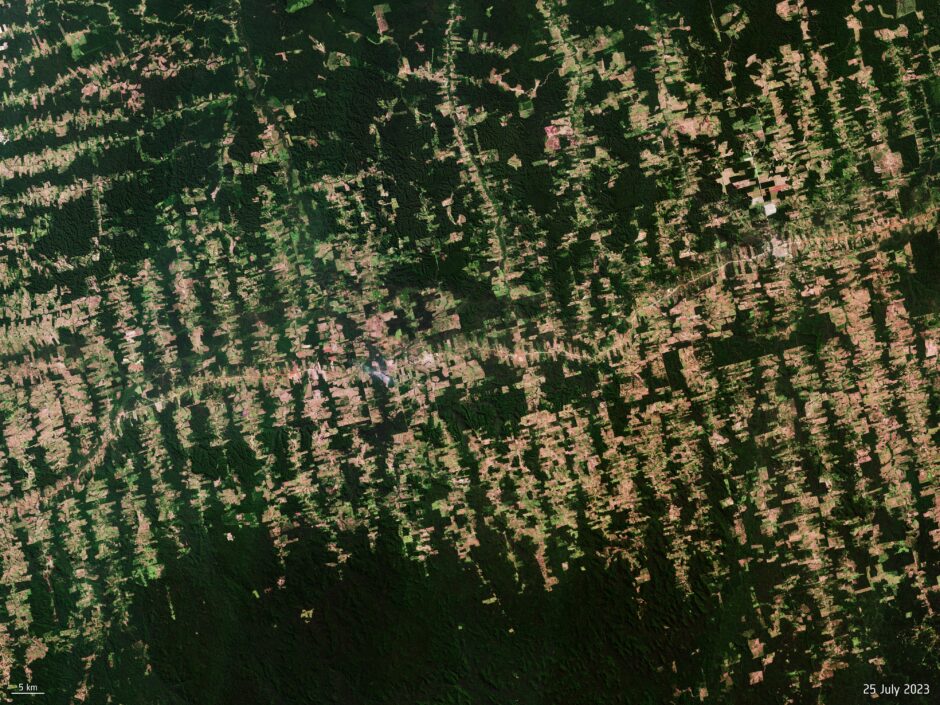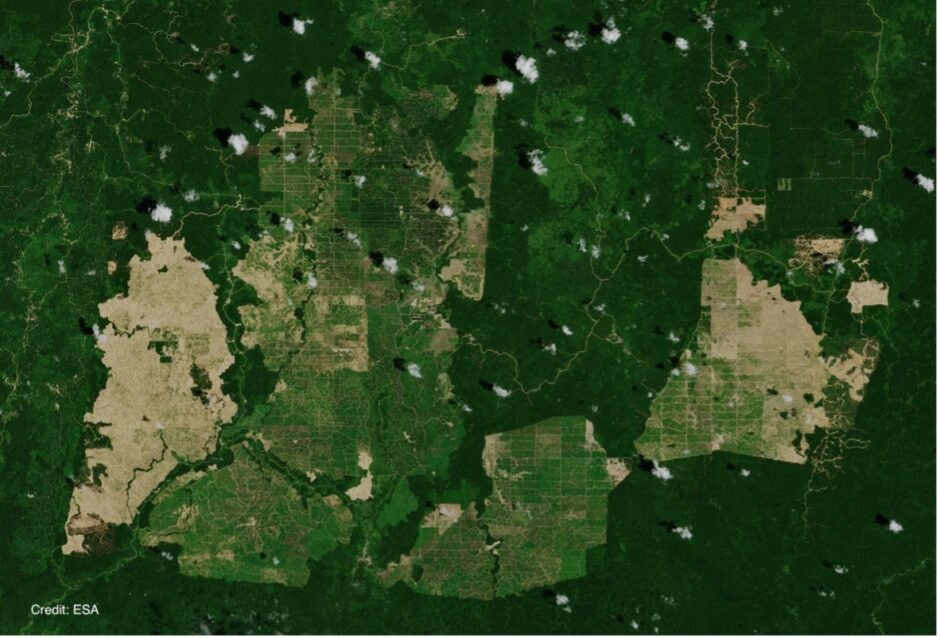Forest Biomass
Observing forest biomass
Plants contribute to the environment’s biomass, which refers to the mass of living organisms in a specific area. Monitoring forest biomass is essential for estimating carbon sequestration and assessing environmental damage or risks. It also provides insights into environmental changes from space, such as how climate change impacts plant growth.
Through the process of photosynthesis, plants and trees absorb carbon dioxide from the atmosphere and release oxygen. Forests serve as significant carbon sinks by taking in atmospheric carbon and storing it as they grow. This process, known as carbon sequestration, helps reduce the amount of carbon dioxide in the atmosphere.

Impact of deforestation
Deforestation occurs due to activities such as agriculture expansion, urban development, logging, and mining, which remove trees for economic or practical purposes. This leads to habitat loss for animals living in forest, but it also takes the forest out of action in terms of carbon sequestration. Moreover, many trees removed from forests are burned, combustion releases the sequestrated carbon into the atmosphere are carbon dioxide.


Palm oil is the most widely-produced tropical edible oil. It’s used in a vast array of products – from ice cream and chocolates, to cosmetics such as make up and soap, to biofuel. Not only is it versatile, palm oil is also a uniquely productive crop. Harvested all year-round, oil palm trees produce up to nine times more oil per unit area than other major oil crops.
To meet global demand, palm oil trees are grown on vast industrial plantations – leading to acres of rainforest being cut down and a loss of habitat for species such as the orangutan . Between 1980 and 2014, global palm oil production increased from 4.5 million tonnes to 70 million tonnes, and is expected to increase.
